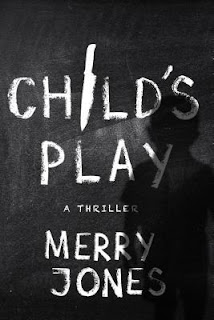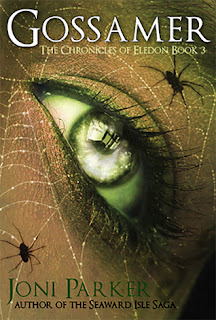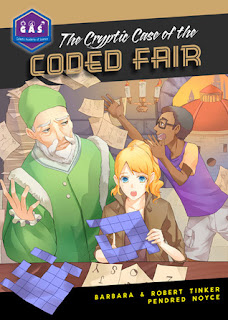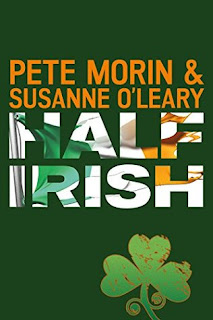In 1993, I was fined a trivial sum by the Massachusetts
State Ethics Commission for allowing a friend of mine to pay for my Osso Buco
(and a few martinis as well). I had no idea at the time that would become the
focal point of a novel I would write sixteen years later:
“What is ‘
osso
buco’?”
“Braised veal shank. It’s a northern Italian staple.
Delicious.”
While the novel represented a radical fictionalization of
events surrounding the federal indictment of that friend (he was just as
generous to many others), the novel’s treatment of gastronomie is as true as I can tell it, as are the two following
sequels, Full Irish and Half Irish.
I cannot say I did this consciously. The vast majority of
Diary
of a Small Fish I wrote merely as a scribe for a bunch of characters
who evanesced in my imagination and dictated to me like I was paid a penny a
word. Apparently, they liked food, too. This leads me to suspect that they are
all alter egos, at least as it comes to the culinary arts.
But there in the opening chapter of Diary of a Small Fish, the first food reference: “a well-aged New
York strip.” A staple of my upbringing.
Diary,
Full
Irish and
Half Irish, follow the saga of Paul
Forte, ex-politician, lawyer, griever of life’s losses, and gourmand, and his
passionate love interest, Shannon McGonigle. Shannon was one of the grand
jurors before whom Paul was compelled to testify against his friend. She
intrigued him from the outset, but he was hooked on their first social meeting:
a long afternoon of beer drinking and chain smoking (with a little fried
calamari) at Boston’s venerable old institution, Brandy Pete’s. What hooked
him? She drank Harpoon, an “ale with attitude. To match the mouth.”
The characters continued to insinuate their food tastes into
pivotal scenes. After their relationship was consummated (in an edible paint
scene), Paul and Shannon have post-argument sex in the kitchen (“fresh
linguine, vine ripe tomatoes, olives and a half-duck, already roasted”),
leading to what I still think is two of the best lines in any of my novels:
But Shannon is a resourceful woman, and she distracted me further with a deft
raising of skirt and removal of underwear, and we used the prep table for a
wholly unintended function which I suspect debilitated the structural soundness
of its legs.
After such an experience, it is impossible to eat pasta and
duck naked without giggling like a fool, and there is always the sense that the
taste is just a little different.
Later on, as they share dinner in one of Boston’s iconic
bistros (Hammersley’s), Paul and Shannon share some deeply personal
observations about themselves, interrupted by the waiter:
Rinaldo showed up at the wrong time again, using cake and port as his weapons. But even he couldn’t break the spell. Shannon paid him no mind and he flounced off.
“We can never come back here again, you know.”
She flicked her fork into the cake, slipped it under a morsel of black gooiness and slid it between her lips. “He’ll get over it.”
There is also a lot of good booze in these novels. The 95
year-old mother of my friend sent me an email after reading Diary. She said, “if you drank as much
as Paul, you’d never have finished the novel.”
Paul and Shannon’s adventures continue in Full Irish and Half Irish, as they gambol through the taverns, pubs and bistros of
Ireland and Boston.
All of this focus on food and drink was not for everyone, of
course. I received an unusually harsh 1 star review from a Goodreads reader,
who
complained:
It's kind of like the author couldn't decide whether he wanted to write a political thriller or just a really long story about rich people enjoying expensive food and wine (which he goes to staggering extremes to explain in every detail during almost every scene). I read books for interesting character and plot development, not to hear how often they eat fancy food and drink expensive alcohol.
Clearly, this reader grew up on canned hash.
There are reasons (I came to understand) why these
characters dictated this singular focus on food. Paul is a man of unusual
privilege and upbringing, stuck in a circumstance over which he has no control.
Faced with the death of his father, the loss of his ex-wife and the prospect of
prison, it would be understandable for him to resort to anger, self-pity,
effrontery, as so many in his station might have. But Paul is a sensitive soul,
full of observations about the human condition, and he faces his crucibles with
a sense of humor and appreciation for the complexities of life. That his lover
happens to be a child of a broken Southie family emphasizes that, despite
Paul’s upper class upbringing, his soul is close to the street. Still, she is
no fan of the cauldron of steamers (“smells like shit,” she says).
Food serves as a means of distinguishing his persona, of
illustrating his sensitivity to taste, smell, his joy in the social aspects of food
preparation and consumption. In one earlier scene of
Diary, alone, drunk and bereft on Christmas Eve, Paul wanders into
a Chinatown restaurant. It is late, and the restaurant is empty (as empty as
his heart), except for the host family who are eating together before cleaning
up to go home. He asks if they have any
dim sum left. They make a place for him and the father
instructs his children to bring Paul food. Chicken feet. The father gestures to
the gray patches on Paul’s temples and says, “Your heart weak.” Paul learns
from the man the miraculous properties of Chinese ingredients in the healing of
the body and soul. At home late that night, he makes a chicken soup with
ingredients gifted to him:
Perhaps it was the soup, but I muddled through Christmas day without once entertaining the thought of jumping off the roof. It’s so obvious why people do that sort of thing at this time of year.
Food brings people together, it induces and facilitates
dialogue, it incorporates the milieu and provides scenery, attitude and mood.
It is a rich source of metaphor. Like music, art, a hobby or skill, it provides
the reader more than a glimpse into the souls of the characters.
I shall finish with two disparate examples of food’s
ubiquity in the arts and humanities.
In Hilaire Belloc’s
The Mercy
of Allah (1922), as the protagonist travels through the countryside, he is
offered food and drink by a local citizen. He observes, “the prospect of
refreshment at the charges of another is an opportunity never to be neglected
by men of clear commercial judgment.”
The other appears throughout Alfred Hitchcock’s movie,
Frenzy, where Inspector Oxford and his wife discuss the serial
murders as she serves him a continuing array of grotesque “gourmet” dishes,
including pig feet (“Pieds du Porc”) and fish stew (head on). A comic
counterpoint to the lurid details of sexual perversion.
And aside from its role in the plot, there are truths within
food that transcend the banalities of daily life. As Raymond Hannah observes in
the opening line of my short story,
Club Dues, “Osso buco is a dish
never to be interrupted.” He is 100% correct!
Diary of a Small Fish is available FREE! on Amazon. If you enjoy it,
you’ll enjoy the two sequels. Just don’t read any of them on an empty stomach.
Thanks for stopping by to share your food for thought, Pete!
You can find Pete here:








